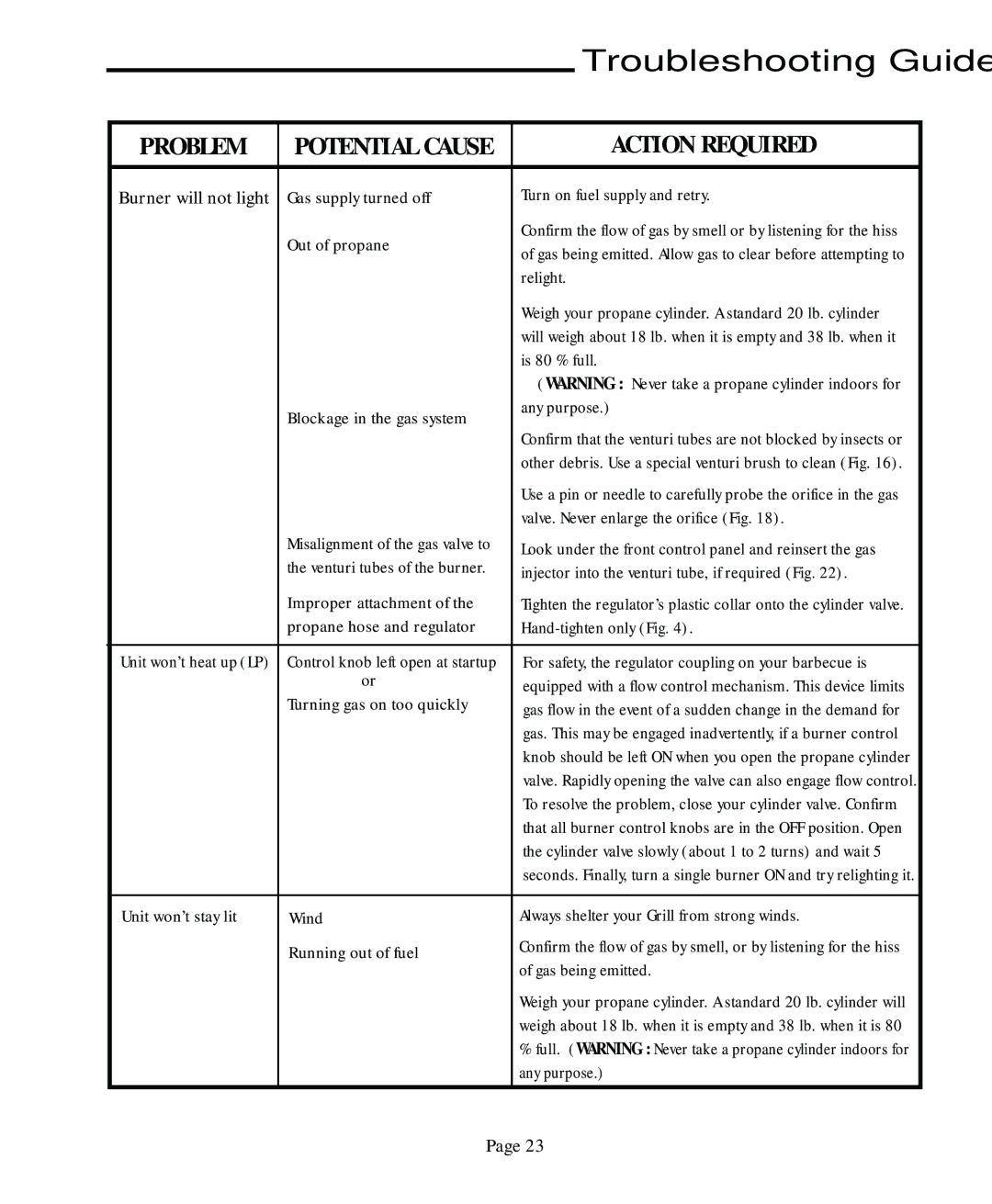|
|
| Troubleshooting Guide |
|
|
|
|
PROBLEM | POTENTIAL CAUSE |
| ACTION REQUIRED |
|
|
|
|
Burner will not light | Gas supply turned off | Turn on fuel supply and retry. | |
| Out of propane | Confirm the flow of gas by smell or by listening for the hiss | |
| of gas being emitted. Allow gas to clear before attempting to | ||
|
| ||
|
| relight. | |
|
| Weigh your propane cylinder. A standard 20 lb. cylinder | |
|
| will weigh about 18 lb. when it is empty and 38 lb. when it | |
|
| is 80 % full. | |
|
| (WARNING : Never take a propane cylinder indoors for | |
| Blockage in the gas system | any purpose.) | |
| Confirm that the venturi tubes are not blocked by insects or | ||
|
| ||
|
| other debris. Use a special venturi brush to clean (Fig. 16). | |
|
| Use a pin or needle to carefully probe the orifice in the gas | |
|
| valve. Never enlarge the orifice (Fig. 18). | |
| Misalignment of the gas valve to | Look under the front control panel and reinsert the gas | |
| the venturi tubes of the burner. | injector into the venturi tube, if required (Fig. 22). | |
| Improper attachment of the | Tighten the regulator’s plastic collar onto the cylinder valve. | |
| propane hose and regulator | ||
|
|
| |
Unit won’t heat up (LP) | Control knob left open at startup | For safety, the regulator coupling on your barbecue is | |
| or | equipped with a flow control mechanism. This device limits | |
| Turning gas on too quickly | ||
| gas flow in the event of a sudden change in the demand for | ||
|
| gas. This may be engaged inadvertently, if a burner control | |
|
| knob should be left ON when you open the propane cylinder | |
|
| valve. Rapidly opening the valve can also engage flow control. | |
|
| To resolve the problem, close your cylinder valve. Confirm | |
|
| that all burner control knobs are in the OFF position. Open | |
|
| the cylinder valve slowly (about 1 to 2 turns) and wait 5 | |
|
| seconds. Finally, turn a single burner ON and try relighting it. | |
|
|
|
|
Unit won’t stay lit | Wind | Always shelter your Grill from strong winds. | |
| Running out of fuel | Confirm the flow of gas by smell, or by listening for the hiss | |
| of gas being emitted. | ||
|
| ||
|
| Weigh your propane cylinder. A standard 20 lb. cylinder will | |
|
| weigh about 18 lb. when it is empty and 38 lb. when it is 80 | |
|
| % full. (WARNING : Never take a propane cylinder indoors for | |
|
| any purpose.) | |
|
|
|
|
Page 23
